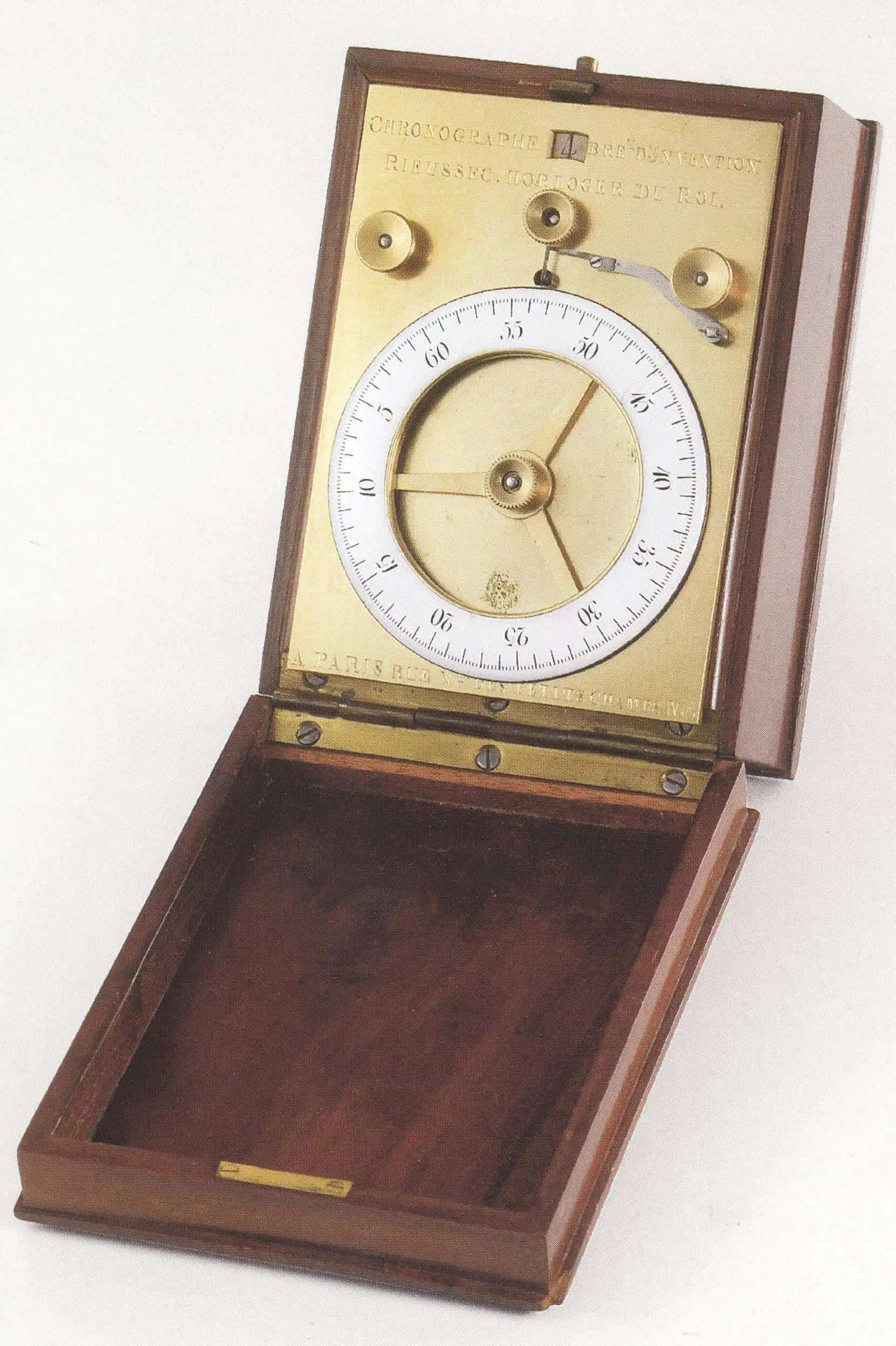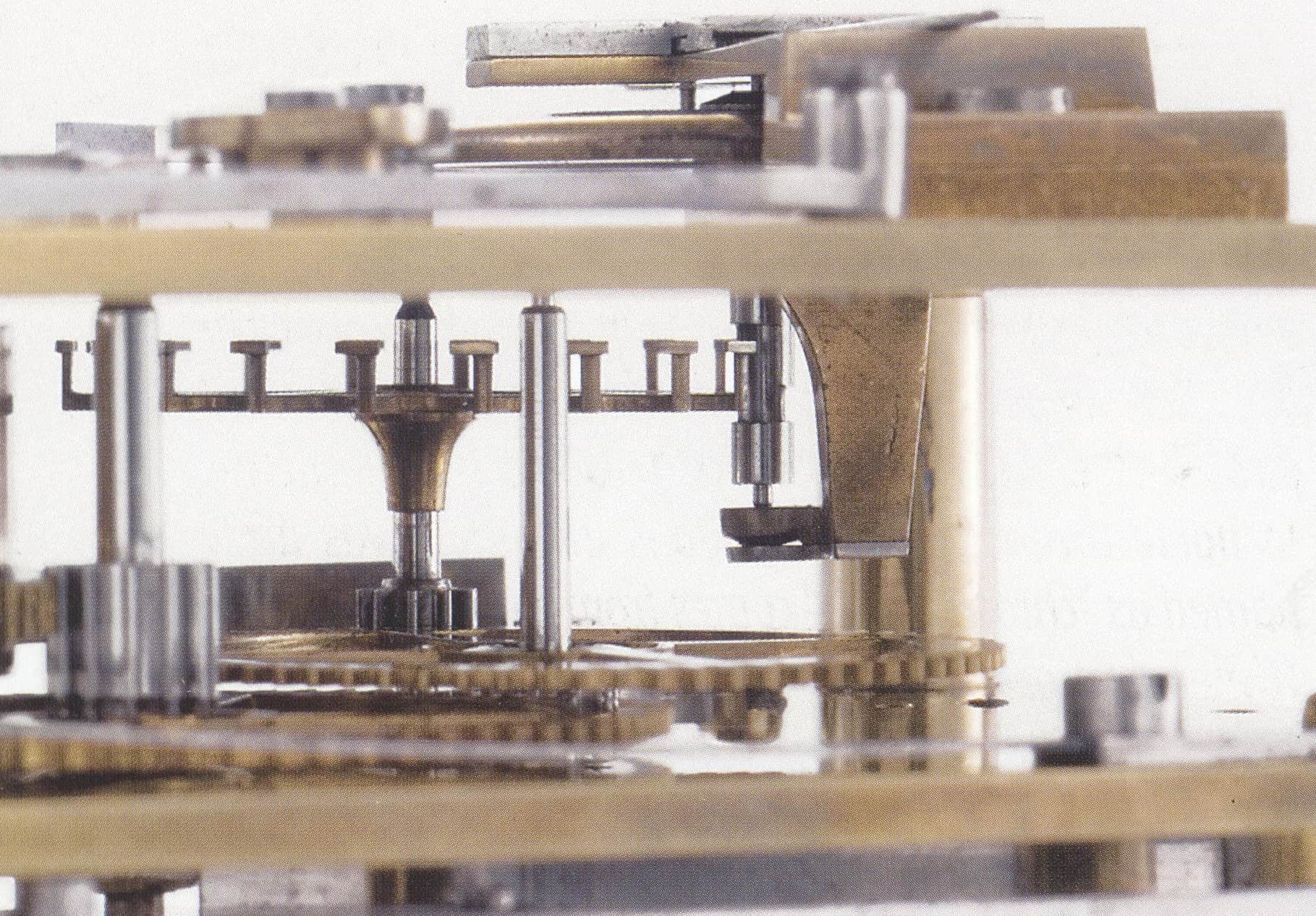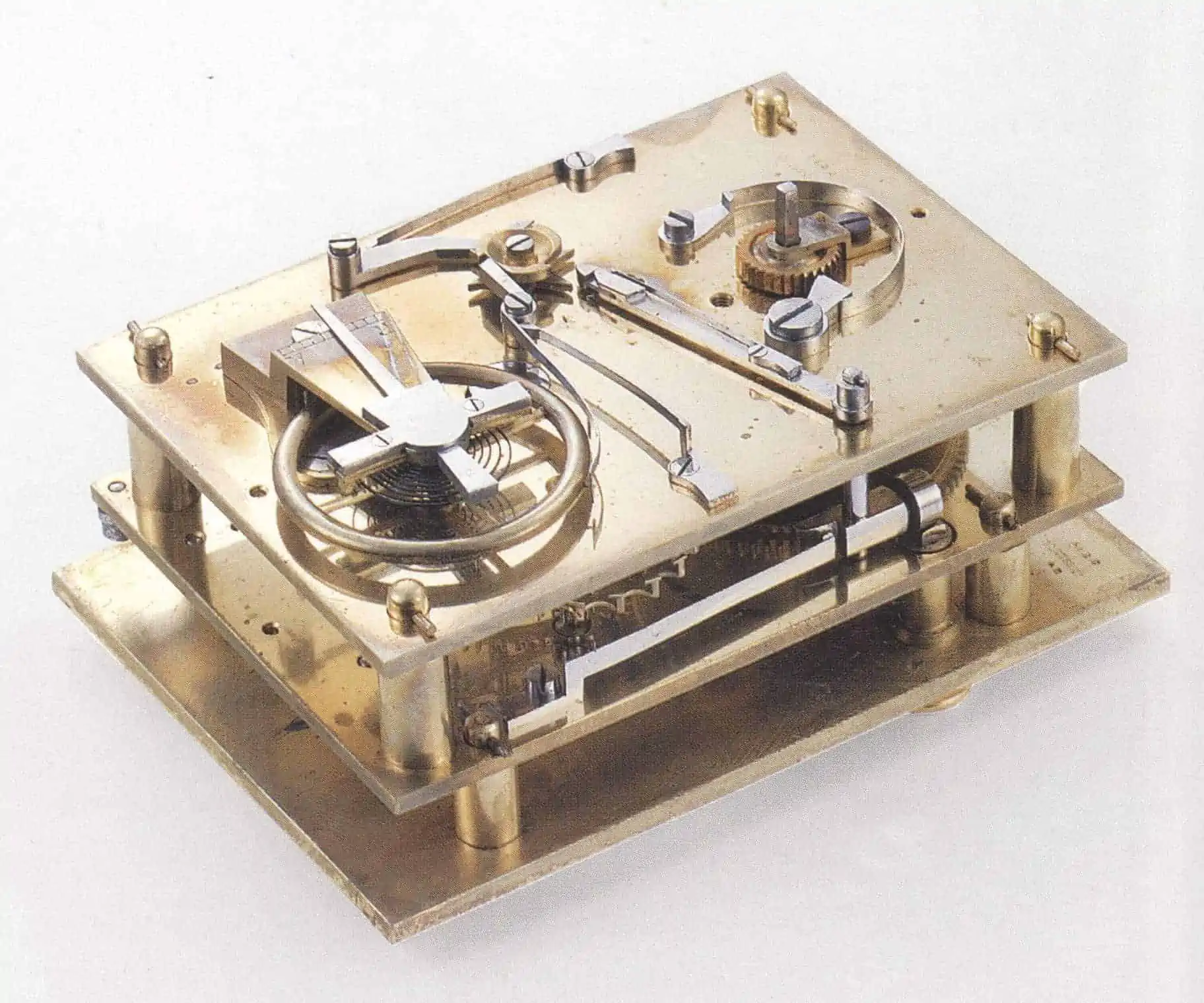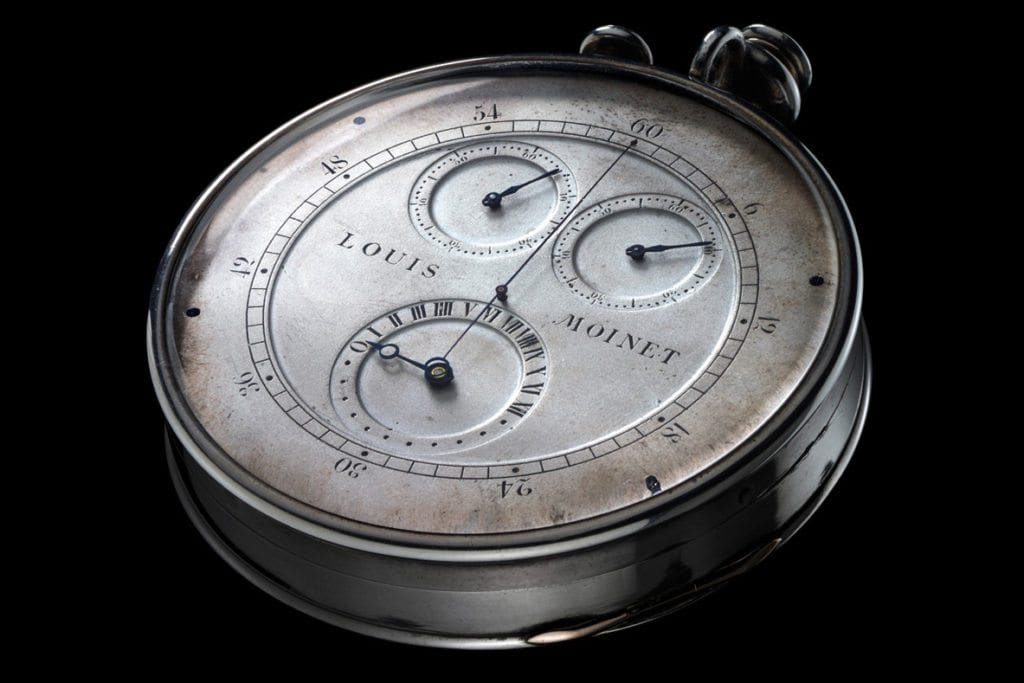How often did you hear it? "Chronometer is just any watch, what you mean is a chronograph", with the patronising tone of the know-it-all. Well, next time ask him why it's called chrono-graph. I bet 9 out of 10 won't know. Maybe even more.
In fact, chrono-meter (ancient greek: χρονόμετρον, khronómetron, "time measurer") just measures (meter) the time (Chrono). The chronograph is the correct denomination for a stopwatch.
The aforementioned know-it-all will probably ensue in a little history lesson for the peasant claiming the Zenith El Primero was the first chronograph in 1969. That's the result of internet wisdom, which is naturally wronger than wrong. Seiko and Heuer worked on chronographs in parallel and issued own versions the same year. Ok, Zenith was still first then. No. Well, the devil's in the details. Those were indeed the first automatic chronographs, but chronographs were already used at the beginning it the 20th century (Longines, Omega, Breitling, Patek...) and were widely used during WWI, in artillery for example. But that's not the topic of this, you can read all that...err...on the internet....
The history and real function of the first chronograph are in its name. Why is it called like that?
From the ancient greek χρόνος (khrónos 'time') and γράφω (gráphō 'to write'), chronograph doesn't mean "stopwatch" but "time writer". What's writing got to do with watches?
Well the first chronograph was invented because of horse racing.
Louis XVIII of France loved horse races, hence they were all the rage in Paris' high society. For this reason, the court watchmaker Nicolas-Mathieu Rieussec worked on a contraption to allow for the measurement of time intervals and know exactly how much time each horse needed from start to finish. Rieussec built a device in a mahogany box that marked the times with ink on rotating disks as race times were stopped. The device was officially used for the first time around 200 years ago, in 1821, during horse races on the Paris Champ de Mars (where the Eiffel Tower stands today). As bulky as the time recorder was, the name chronograph was a perfect fit.
To understand how it works, I'll leave it to Breguet himself to describe it (together with Prony he examined the device on behalf of the French Academy of Sciences:
"The volume and shape of this instrument are about those of a large pocket chronometer. The dial is movable and turns about an axis that is perpendicular to its plane and passes through its centre. When the Chronograph is operating, this dial makes one revolution per minute, and since its circumference is divided into 60 parts, the angular motion of one division corresponds to one second. A small window next to the hanging ring reveals a number, which is replaced by another number with each revolution of the dial and indicates the minutes; the Chronograph can run about three-quarters of an hour without stopping.
To use this instrument, when it is mounted and in a resting state, one first sets the divisions marking the time to the starting points by turning a knurled knob with one’s hand. Through the intermediary of a gear train, the knob causes the minute and second dials to move. Having done this, when the moment to start timing arrives, one presses a small button next to the knob to set the machine in motion. The observer can give full attention to the phenomena whose successive time intervals he wishes to measure, and as soon as one of the divisions of these intervals is reached, he presses a second button next to the one we have just mentioned. At the moment when it is pressed a small pen, or metal point, passing through the open tip of a cone filled with black oil ink and placed opposite the moving dial’s fixed zero point, marks a point on the circumference that is divided into seconds. This point then indicates the second and fraction of a second corresponding to the beginning or end of the period of time being measured. Operation of the pen trigger mechanism neither stops nor slows the moving dial’s motion, so the button can be pressed several times while this motion lasts, making a number of black points on the scale divided into 60 parts; each point indicates, by its position, the moment when it was marked. To stop the chronograph quickly, one need only press the button that started it. The mechanism is arranged such that pressing this button abruptly changes the current state of the machine, making it pass from a resting state to movement or from movement to its resting state. We did not examine the inside of the instrument, and we do not think that it offers anything particularly remarkable, given the current state of watchmaking. Its principal merit lies in its ability to instantly indicate the first and last moments of several successive time intervals by means of permanent, visible signs on a moving dial, without requiring the attention of the observer’s eyes or ears. A chronograph with such a property unquestionably offers precious resources to physicians, engineers and, in general, anyone who measures phenomena. A highly satisfactory trial was recently made at public horse races; but its use can obviously extend to an infinite variety of other kinds of observations, the testing of moving machines, gauging of running water, and almost all hydraulic operations. The passage of a star over the cross-hairs of a telescope, when the astronomer has only one free hand, will be very precisely indicated by this new means, which will either serve to verify the count of the seconds on a clock, or will replace such a count if the distant location of the clock or poor hearing keeps the escapement from being heard. […]
We think that Mr. Rieussec’s Chronograph deserves the Academy’s approval"
After the Academy's approval Rieussec also got it patented and his invention was considered the first chronograph until 2013.
Early that year, the world recognized another chronograph five years older and built for a different purpose, and a French watchmaker named Louis Moinet altered watchmaking history. In 1815, Moinet designed a pocket stopwatch for astronomers. The brilliant inventor used his instrument to explore stars and planets. Using a telescope and a stopwatch, he measured the movement of celestial bodies.
The device could measure recorded time to 1/60th of a second. This was an incredible degree of precision for such an early timepiece. He achieved this precision through a running speed of 216,000 vibrations per hour, or 30 Hz (for comparison purposes, our high-beat wristwatches have 28,800 vibrations per hour, 4Hz). When Christie’s auctioned the watch in 2012, it sold for just 62,500 CHF ($67,443) and went largely unnoticed by many bidders.
So now, next time a know-it-all wants to boast his superior knowledge mentioning Zenith as the first chronograph, you know how to put him in his place. Little bugger.
Rieussec's "Chronograph secondes"




Moinet's "Compteur de Tierces"

***Disclaimer: this is the result of a little internet research. So yes, I, too, am a little patronising, hell even sanctimonious know-it-all bugger. There's that.
In fact, chrono-meter (ancient greek: χρονόμετρον, khronómetron, "time measurer") just measures (meter) the time (Chrono). The chronograph is the correct denomination for a stopwatch.
The aforementioned know-it-all will probably ensue in a little history lesson for the peasant claiming the Zenith El Primero was the first chronograph in 1969. That's the result of internet wisdom, which is naturally wronger than wrong. Seiko and Heuer worked on chronographs in parallel and issued own versions the same year. Ok, Zenith was still first then. No. Well, the devil's in the details. Those were indeed the first automatic chronographs, but chronographs were already used at the beginning it the 20th century (Longines, Omega, Breitling, Patek...) and were widely used during WWI, in artillery for example. But that's not the topic of this, you can read all that...err...on the internet....
The history and real function of the first chronograph are in its name. Why is it called like that?
From the ancient greek χρόνος (khrónos 'time') and γράφω (gráphō 'to write'), chronograph doesn't mean "stopwatch" but "time writer". What's writing got to do with watches?
Well the first chronograph was invented because of horse racing.
Louis XVIII of France loved horse races, hence they were all the rage in Paris' high society. For this reason, the court watchmaker Nicolas-Mathieu Rieussec worked on a contraption to allow for the measurement of time intervals and know exactly how much time each horse needed from start to finish. Rieussec built a device in a mahogany box that marked the times with ink on rotating disks as race times were stopped. The device was officially used for the first time around 200 years ago, in 1821, during horse races on the Paris Champ de Mars (where the Eiffel Tower stands today). As bulky as the time recorder was, the name chronograph was a perfect fit.
To understand how it works, I'll leave it to Breguet himself to describe it (together with Prony he examined the device on behalf of the French Academy of Sciences:
"The volume and shape of this instrument are about those of a large pocket chronometer. The dial is movable and turns about an axis that is perpendicular to its plane and passes through its centre. When the Chronograph is operating, this dial makes one revolution per minute, and since its circumference is divided into 60 parts, the angular motion of one division corresponds to one second. A small window next to the hanging ring reveals a number, which is replaced by another number with each revolution of the dial and indicates the minutes; the Chronograph can run about three-quarters of an hour without stopping.
To use this instrument, when it is mounted and in a resting state, one first sets the divisions marking the time to the starting points by turning a knurled knob with one’s hand. Through the intermediary of a gear train, the knob causes the minute and second dials to move. Having done this, when the moment to start timing arrives, one presses a small button next to the knob to set the machine in motion. The observer can give full attention to the phenomena whose successive time intervals he wishes to measure, and as soon as one of the divisions of these intervals is reached, he presses a second button next to the one we have just mentioned. At the moment when it is pressed a small pen, or metal point, passing through the open tip of a cone filled with black oil ink and placed opposite the moving dial’s fixed zero point, marks a point on the circumference that is divided into seconds. This point then indicates the second and fraction of a second corresponding to the beginning or end of the period of time being measured. Operation of the pen trigger mechanism neither stops nor slows the moving dial’s motion, so the button can be pressed several times while this motion lasts, making a number of black points on the scale divided into 60 parts; each point indicates, by its position, the moment when it was marked. To stop the chronograph quickly, one need only press the button that started it. The mechanism is arranged such that pressing this button abruptly changes the current state of the machine, making it pass from a resting state to movement or from movement to its resting state. We did not examine the inside of the instrument, and we do not think that it offers anything particularly remarkable, given the current state of watchmaking. Its principal merit lies in its ability to instantly indicate the first and last moments of several successive time intervals by means of permanent, visible signs on a moving dial, without requiring the attention of the observer’s eyes or ears. A chronograph with such a property unquestionably offers precious resources to physicians, engineers and, in general, anyone who measures phenomena. A highly satisfactory trial was recently made at public horse races; but its use can obviously extend to an infinite variety of other kinds of observations, the testing of moving machines, gauging of running water, and almost all hydraulic operations. The passage of a star over the cross-hairs of a telescope, when the astronomer has only one free hand, will be very precisely indicated by this new means, which will either serve to verify the count of the seconds on a clock, or will replace such a count if the distant location of the clock or poor hearing keeps the escapement from being heard. […]
We think that Mr. Rieussec’s Chronograph deserves the Academy’s approval"
After the Academy's approval Rieussec also got it patented and his invention was considered the first chronograph until 2013.
Early that year, the world recognized another chronograph five years older and built for a different purpose, and a French watchmaker named Louis Moinet altered watchmaking history. In 1815, Moinet designed a pocket stopwatch for astronomers. The brilliant inventor used his instrument to explore stars and planets. Using a telescope and a stopwatch, he measured the movement of celestial bodies.
The device could measure recorded time to 1/60th of a second. This was an incredible degree of precision for such an early timepiece. He achieved this precision through a running speed of 216,000 vibrations per hour, or 30 Hz (for comparison purposes, our high-beat wristwatches have 28,800 vibrations per hour, 4Hz). When Christie’s auctioned the watch in 2012, it sold for just 62,500 CHF ($67,443) and went largely unnoticed by many bidders.
So now, next time a know-it-all wants to boast his superior knowledge mentioning Zenith as the first chronograph, you know how to put him in his place. Little bugger.
Rieussec's "Chronograph secondes"




Moinet's "Compteur de Tierces"

***Disclaimer: this is the result of a little internet research. So yes, I, too, am a little patronising, hell even sanctimonious know-it-all bugger. There's that.
Last edited:



